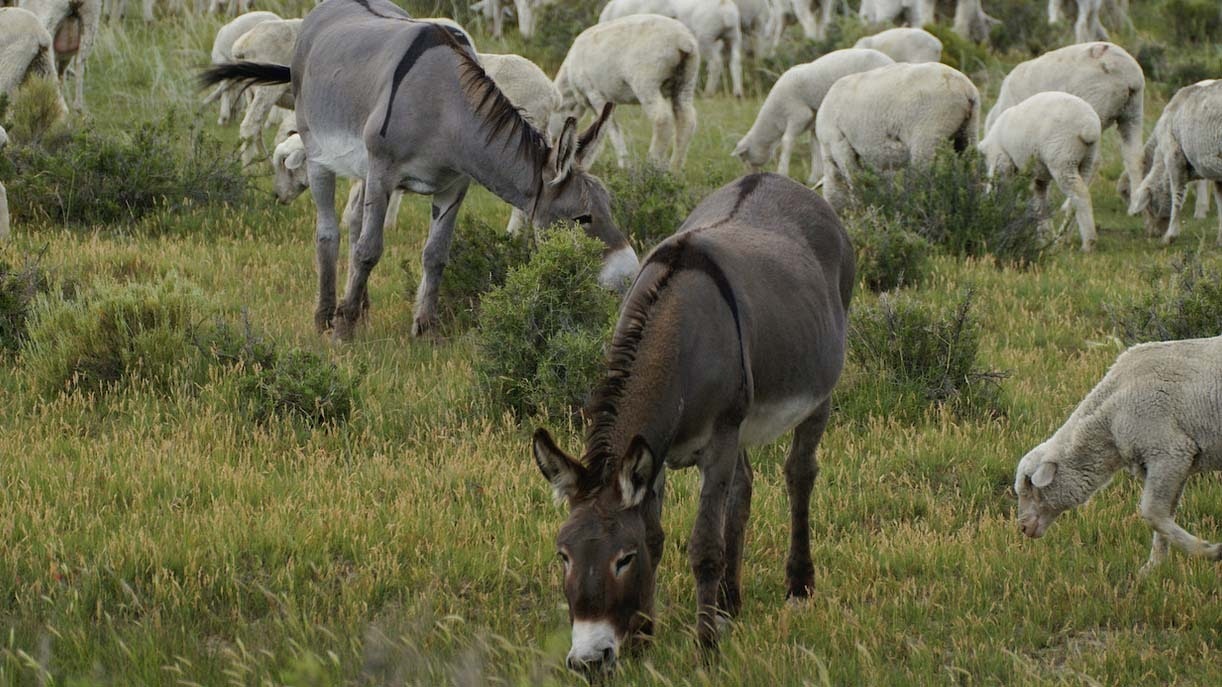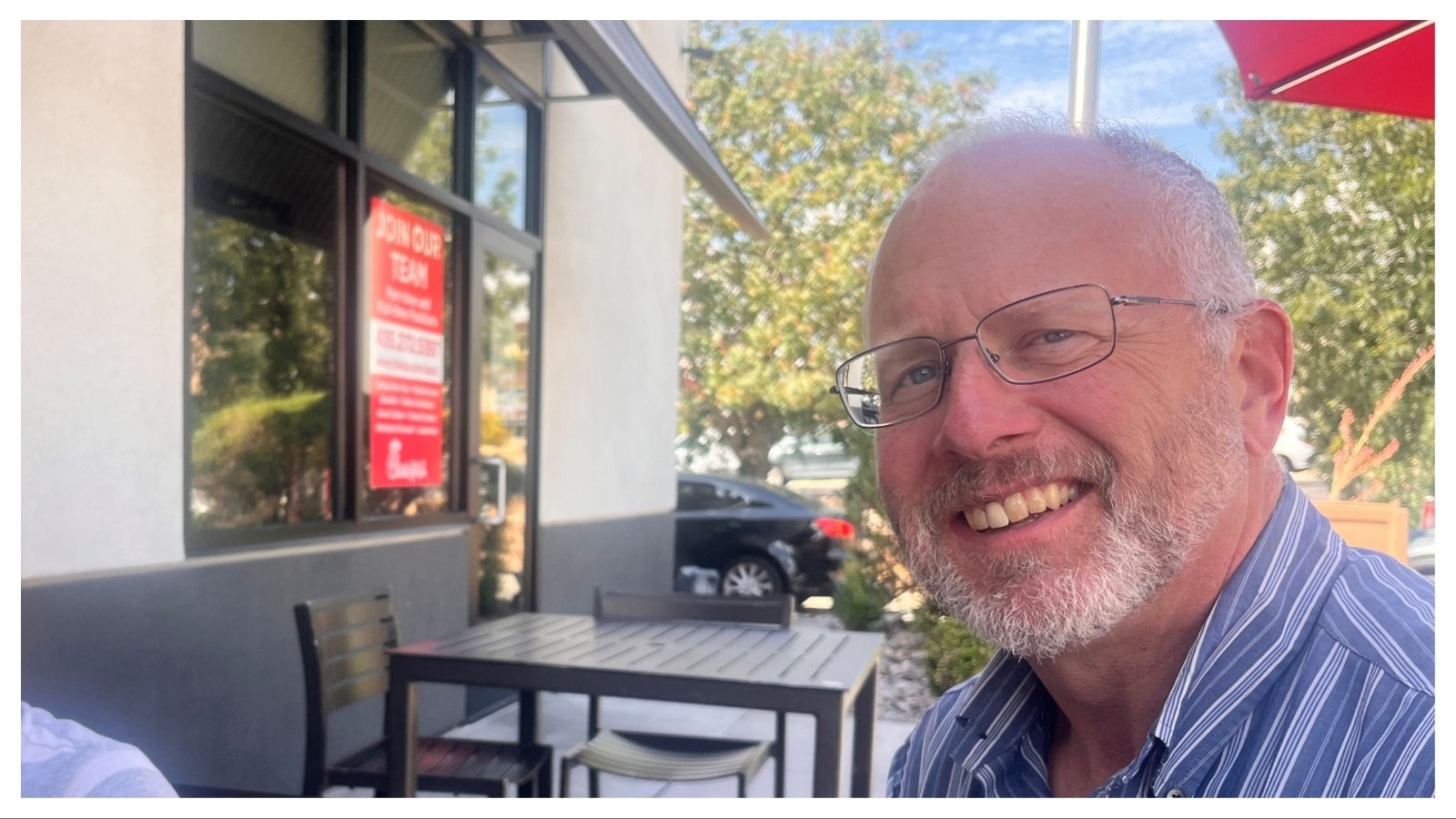I met Bill and Hilary on a ranch outside of Billings, Montana nearly two decades ago.
No, not the political couple, but a pair of burros (donkeys) that carried their names. The pair of formerly wild burros had been used to guard domestic sheep from coyotes, but the ranch owner had passed away and all the ranch’s sheep had been sold.
The burros had been born in the desert southwest and rounded up by federal land managers years prior. They had made their way through the wild horse and burro adoption system to live on a ranch in Montana. A gelding and a jenny, they were both colored slightly different shades of western dirt and were bonded to domestic sheep. The widow we bought them from couldn’t tell one from the other, so she wasn’t going to be any help, but was happy to get rid of the pair for the total of $700.
The rancher had named the burros Bill and Hilary, and since the animals were adults, we kept the names. I laughed at what I fondly dubbed “my Democrats.”
Up until that time, I’d had experience with horses and mules, but not donkeys. Cass and I were prepared to handle a rodeo when the widow told us that they didn’t like to load and Bill could be difficult to handle. That set the stage for my first lesson.
We crowded the pair to the open door of the open-top stock trailer, taking things slowly and quietly, trying to be on the lookout for potential kicks from a hind leg. They were visibly stressed at these two strangers handling them, putting a rope around their butts to force them into the opening of the trailer. As it turns out, when a burro gets stressed, it doesn’t react with a fight-or-flight response. The response is more of a “let’s stop-and-consider things” nature.
Inch by inch, we maneuvered Hilary forward, with frequent stops so she could continue her considerations. Just as Hilary finally put one hoof onto the floor of the trailer, Bill quickly stepped forward to load, with Hilary following in one swift moment. They rode like the old hands they were, all the way back to Sublette County. The widow had been mistaken: Burros simply don’t like to be rushed.
In the early years, we would place halters and lead ropes on the burros to lead them when we had to move the sheep flock between pastures or allotments. But we eventually quit doing that, as the burros would always follow the flock as it moved.
Bill and Hilary quickly settled into life with our domestic sheep, a comforting presence to protect the sheep from coyotes, and a bear on at least one occasion. I carried ginger snaps in my jacket pockets as sweet treats for the burros and my favorite ewes, and soon the burros would follow me anywhere. If we needed to move the sheep flock over a scary bridge, I would walk out ahead, followed by the two burros and my lead ewes as we led the flock through the dangerous part of the trail. It would look like we were a superbly managed flock moving as one unit, but the reality is that all the lead animals were just trying to be the first in line for whatever sweetness they could dig out of my pockets. Lesson two: She who has ginger snaps is master of the flock.
Bill and Hilary were excellent sheep guardians, as they had an instinctual dislike for wild canines. They actively chased coyotes away from the sheep, trying to strike the coyotes with their front hooves. They once ran a coyote into its den and stood over the den for hours until I found them. They had no intention of letting the coyote come out alive onto our lambing ground. I would have never found the coyote den without the actions of the burros.
Bill and Hilary loved newborn lambs. When a ewe would be busily cleaning off a newborn lamb, they burros would inch up closer and closer until they could stick their noses down and sniff the newborn. They would take turns gently resting their noses on the back of a sleeping lamb, breathing in the scent.
While logic may tell us that is a way for a guardian animal to record the newborn’s scent to register it as part of the flock to be guarded, my heart tells me of another motive. You know that particular lovely scent of a newborn baby’s head, and the way that makes you feel? I do. And I believe Bill and Hillary had their own pleasure-endorphin release from the smell of newborn lambs.
Sometimes a lamb would wake up, fail to see its mother grazing nearby, and would run to a burro. The burros, each weighing about 700 pounds, would stand still as the lamb ran underneath their bellies, probing with its little nose into sensitive places as it sought out an udder on the wrong body. The burros were so careful, never lifting a hoof off the ground lest the wee one be knocked down, until the ewe had reclaimed her babe.
Their fondness for baby animals didn’t end with lambs. They also enjoyed calves from our Hereford cows, occasionally borrowing one from a cow, licking on the calf as though it were an ice cream cone. Since we calved in a pasture along a willow-lined river bottom, it was only a matter of time before the burros found a newborn moose calf that they tried to borrow for similar treatment. But the cow moose wasn’t pleased when she found her calf was no longer in hiding but had been adopted by the burros. The moose reclaimed her calf, but the burros kept sneaking back to see it, and we had to use the ranch truck to intercept the enraged cow from punishing the fleeing burros.
My experience with Bill and Hilary led me to adopt another wild burro from a federal holding corral in Utah. Roo was much like her older relatives, and easily took to watching over the sheep. I found all three formerly wild burros were gentle and affectionate, yet excellent guardians of their flock. Eventually I had disagreements with all three burros, and their wrath included striking out with fake kicks aimed by a hind leg – always pulling the kick up short so that it wouldn’t connect. It was always a last-ditch effort to change my mind, and always made me laugh. It was their gentle way to throw a fit.
As they grew older, Bill and Hilary slowed down, and they retired from guardian duties as their eyesight dimmed with old age. Roo succumbed to poison ingested from a wild plant that turned toxic in a drought a few years ago, but the old burros, both pushing 30 years in age, had the run of a huge sagebrush flat adjacent to the house. Hilary lasted just over a year longer than Bill, but her earthly journey ended this week with her nose buried in her breakfast of alfalfa.
The final lesson from the years I spent with these lovely creatures is that surely there are burros in heaven, their noses resting on the backs of newborn lambs. If I’ve lived a decent life, I’ll be packing some ginger snaps in my pockets when we meet again.
Cat Urbigkit is an author and rancher who lives on the range in Sublette County, Wyoming. Her column, Range Writing, appears weekly in Cowboy State Daily.





